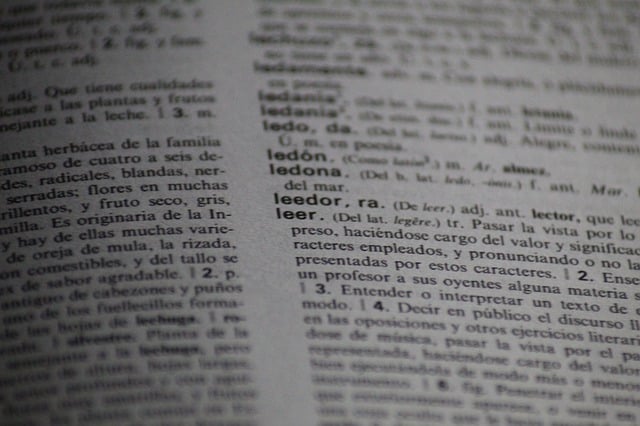
To find out if a word has an orthographic accent, you can use a dictionary.
The word accent derives from the Latin term accentus , which in turn has its origin in a Greek word. It is about the articulation of the voice to highlight , with pronunciation , a syllable of the word . This distinction occurs through greater intensity or thanks to a higher tone.
In the case of spoken language , this relief of pronunciation is known as tonal accent . In written texts, the accent can be orthographic and include an accent , which is a small oblique line that, in Spanish, goes down from the right to the left of the person reading or writing.
The accent
The accent allows you to indicate which is the stressed syllable of the word, which will require greater force in its pronunciation. This orthographic accent also allows us to distinguish between two words that are written in the same way but that indicate different things: "jump/jumped" , "he/him" , "won/won" , "only/only" .
On the other hand, not all accents of Spanish words are indicated with accents. However, thanks to a series of rules , it is possible to read any word correctly without needing to know it; It is worth mentioning that in other languages, such as English or Japanese, for example, the exact phonetics of certain terms is not implicit through the spelling, which is why it is essential to memorize it. Returning to Spanish, we know that:
* acute words have an accent when they end in "n", "s" or a vowel;
* the serious ones, when they do not end in "n", "s" or vowel;
* Esdrújulas are the only words that always have an orthographic accent.
Based on the three points just presented, let's take as an example the word "weave", from the verb "tejer". It is a two-syllable word, ending with the letter "n". Since it does not have an accent, we can deduce that it is a serious word, which is why its accent falls on its first syllable, that is "te".

An accent is called the phonetic or intonation particularities typical of those who live in a certain region.
Accent as intonation
The accent also refers to a particular intonation that the speaker uses according to his mood or purpose, or to the phonetic particularities that characterize the speakers of a certain region . Regarding the last point, it is very interesting to analyze how many different forms most languages present in the different geographical areas where they are spoken.
Spanish, for example, has a great variety of accents, even within the same country; In Argentina, Salteño, Pampeano and Cordoban are three considerably different accents, each with its own particular tune, accompanied by regionalisms and gestures that make them seem like three independent languages . The same thing happens in Spain, where a man from Malaga, a man from Madrid and a man from Barcelona are leagues apart in their way of speaking.
The concept in music and poetry
In music , the accent indicates where the weight of the pulse falls. In this sense, the accent can appear as a mark within musical notation, which indicates which note has to be played with greater intensity. However, all scores have an implicit accent, which is deduced by observing the type of time signature, indicated at the beginning of each part of the work (if it is a composition such as a piano concerto or a symphony) and in each disturbance.
If it is a 2/4 time signature (two quarters), we know that the first beat of each measure must sound louder than the second. In this way, if we take a measure with two quarter notes (taking into account that the quarter note is figure 4 , and in this case each measure consists of 2 quarter notes) its correct accentuation is very simple. It is worth mentioning that a very complex melody can be difficult to accentuate at first sight, which is why it is essential to master the basics of music reading.
Finally, in poetry , the rhythmic accent is a stylistic resource that appears as a constitutive element of the verse.
